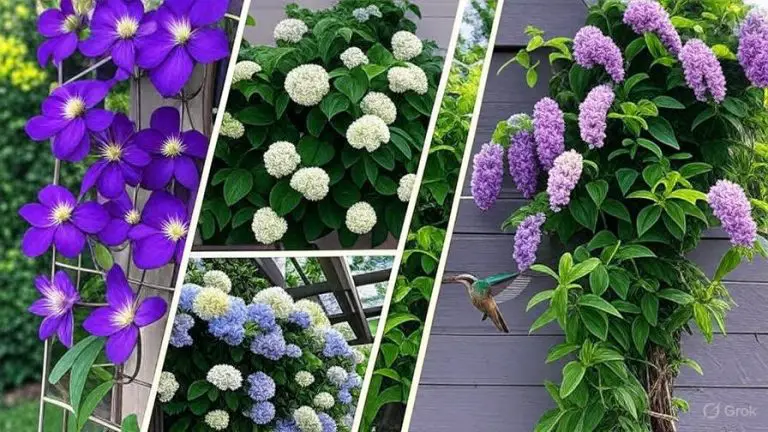Rattlesnake Plant Light Requirements for Healthy Growth
If you’re a plant enthusiast or a beginner looking to add some greenery to your indoor space, the Rattlesnake Plant (Calathea lancifolia) is a fantastic choice.
Known for its striking foliage and unique patterns, this tropical plant can thrive in the right lighting conditions.
In this article, we’ll explore the light requirements of the Rattlesnake Plant and provide you with valuable tips to ensure its healthy growth.
What's On the Page
Understanding Rattlesnake Plant’s Lighting Needs
Rattlesnake Plants are native to the rainforests of Brazil, which means they naturally grow in areas with filtered or indirect sunlight. To mimic their natural habitat, it’s crucial to provide them with the appropriate light conditions to thrive indoors. Ideally, they require bright, indirect light to flourish. Let’s delve deeper into their light requirements and how to meet them effectively.
1. Bright, Indirect Light
Rattlesnake Plants prefer bright, indirect light, which means they should be placed away from direct sunlight.
Direct sunlight can scorch their leaves and cause irreversible damage. Instead, position your plant near a window where it can receive bright, filtered light throughout the day. East-facing or north-facing windows are often suitable, as they offer gentle morning or indirect light.
2. Avoid Direct Sunlight
Direct sunlight can lead to leaf burn and fading of the plant’s vibrant patterns. If you notice any signs of scorching or discoloration on the leaves, it’s an indication that your Rattlesnake Plant is receiving too much light.
Consider moving it further away from the window or using sheer curtains to filter the light.
3. Low-Light Conditions
While Rattlesnake Plants prefer bright, indirect light, they can also tolerate lower light conditions. However, prolonged exposure to low light can affect their growth and diminish the intensity of their leaf patterns.
If you need to place your plant in a low-light area, supplement it with artificial lighting, such as fluorescent or grow lights, to provide adequate brightness.
4. Avoid Strong Drafts
In addition to proper lighting, Rattlesnake Plants thrive in environments with high humidity. However, they are sensitive to drafts, which can dry out their leaves and negatively impact their overall health.
Keep your plant away from air vents, heaters, or any other source of drafts that can create fluctuations in temperature and humidity.
How to Maintain Optimal Light Conditions for the Rattlesnake Plant
Now that you understand the light requirements of Rattlesnake Plants, here are a few tips to help you maintain the ideal lighting conditions:
Placing Your Rattlesnake Plant
Choose a suitable location in your home that provides bright, indirect light. Find a spot near an east-facing or north-facing window, but ensure it’s away from direct sunlight.
Using Curtains or Sheer Blinds
If your Rattlesnake Plant is receiving too much light, consider using sheer curtains or blinds to filter the incoming sunlight. This will help protect the plant from direct sunlight and prevent leaf burn.
Supplementing with Artificial Lighting
If you have limited natural light in your space, supplement it with artificial lighting. Fluorescent or grow lights can provide the necessary brightness for your Rattlesnake Plant’s growth and overall well-being.
Rotating Your Plant
To ensure even growth and prevent your plant from leaning towards the light source, rotate it every few weeks. This will help all sides of the plant receive adequate light, resulting in a more balanced appearance.
FAQs
How much light does a Rattlesnake Plant need?
Rattlesnake Plants thrive in bright, indirect light. They should be placed near a window where they can receive filtered sunlight throughout the day. Avoid direct sunlight, as it can damage their leaves.
Can I keep my Rattlesnake Plant in a low-light area?
While Rattlesnake Plants prefer bright, indirect light, they can tolerate lower light conditions. However, prolonged exposure to low light can affect their growth and diminish the intensity of their leaf patterns. If you need to place your plant in a low-light area, supplement it with artificial lighting, such as fluorescent or grow lights.
What happens if my Rattlesnake Plant receives too much light?
If your Rattlesnake Plant receives too much direct sunlight, its leaves may become scorched and develop brown spots. To avoid this, move the plant further away from the window or use sheer curtains to filter the light.
How often should I rotate my Rattlesnake Plant?
To ensure even growth and prevent your Rattlesnake Plant from leaning towards the light source, rotate it every few weeks. This helps all sides of the plant receive adequate light, resulting in a more balanced appearance.
Can I use artificial lighting for my Rattlesnake Plant?
Yes, you can supplement natural light with artificial lighting for your Rattlesnake Plant. Fluorescent or grow lights can provide the necessary brightness for its growth. Place the lights a few feet above the plant and keep them on for about 12-14 hours a day.
How do I know if my Rattlesnake Plant is not receiving enough light?
If your Rattlesnake Plant is not receiving enough light, it may exhibit signs such as stunted growth, pale or faded leaf colors, or leaves that curl or droop. If you notice these symptoms, consider moving the plant to a brighter location or providing additional artificial lighting.
Can I keep my Rattlesnake Plant outdoors?
Rattlesnake Plants are primarily grown as indoor houseplants. While they can tolerate outdoor conditions in certain climates, it’s best to keep them indoors where you can control the lighting and environmental factors more effectively.
Conclusion
Proper light requirements are essential for the healthy growth of your Rattlesnake Plant. By providing bright, indirect light and avoiding direct sunlight and drafts, you can create an ideal environment for your plant to thrive.
Remember to assess your plant’s lighting needs periodically and make adjustments accordingly. With the right care and attention, your Rattlesnake Plant will reward you with its stunning foliage and bring a touch of the rainforest into your home.

